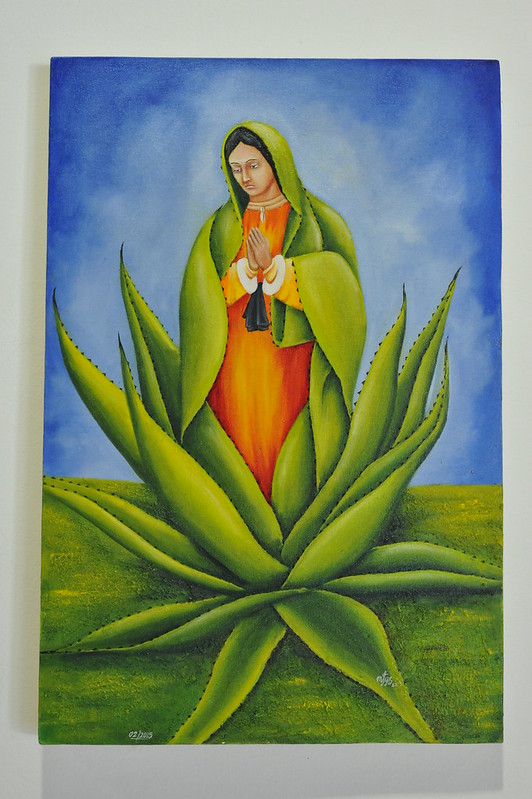Opuntia sulphurea, on a roll.
With temps below 30F for a few nights, many of the new and/or not-so-hardy plants were crammed under the patio roof...
and covered with frost cloth each evening. Old nursery pots came in handy as covers, too (see far right).
The sun room (odd name, since its windows face north and east) is filled with tender plants, and the garage holds a few more.
Nighttime temperatures for the next ten days or so are expected to be in the 40s F. No rain expected until late next week.
I brought two new opuntia species home from the Mexican Hat nursery. The first is Opuntia sulphurea, shown in the top photo. It's native to Argentina and Bolivia, and has stout pads with long, twisted spines. It's not supposed to be frost hardy, but a Gates C&SS friend who lives a few blocks from me has a big potted O. sulphurea that shrugs at our occasional mid 20F temps and snow. (If it grows in the "high Andes Mountains" one would imagine it to be at least frost tolerant, but several sites rate its hardiness only to zone 9b [25F].) After I bought the plant you see in these photos, the good folks at the nursery tossed in another sulphurea for free — thanks, Mexican Hat! Those twisty spines:
Wiggly: Opuntia sulphurea.
A few links:
Opuntia sulphurea at CactiGuide.
First page of an
article from the C&SS Journal on O. sulphurea (October 2013).
Photo of a
beautiful plant at the Huntington, via Dave's Garden.
My other new opuntia also has amazing spines, but in this case they are long and straight as knitting needles. The parent plant was growing in the ground at the Mexican Hat nursery, and a kind helper sliced off these paddles for me:
Opuntia quimilo, drying out in the garage with some cholla sections. Weird blue tint on spines produced magically by garage window.
The quimil is another native of South America. Cold hardy to zone 8, maybe. Spines are reported to reach from 8 to 16 inches in length. (Longest spines in the photo above are >4 inches.)
Lots of cool information about the quimil in
this post (in Spanish). To wit:
O. quimilo is said to be a favorite hideout of black widow spiders.
The paddles are used as a folk-medicine treatment for venomous snakebites. (Paddles are also used to make a poultice for healing wounds.) It'd be kind of depressing if a black widow bit you while you were trying to break off a paddle to treat your venomous snakebite.
The quimil is a staple of
this creature's diet. The pecarí quimilero was apparently known to science only through fossils, and was thought extinct until it was "rediscovered" in the 1970s. From the Wiki link: "It uses its tough snout to roll the cacti on the ground, rubbing the spines off. It may pull off the spines with its teeth and spit them out. The kidneys are specialized to break down acids from the cacti."
Are there any popular North American songs that employ cactus as metaphor?
Here's a good one from Argentina. Free translation:
I'd like to be a quimil
rough and stiff-spined
so that no one would shake me
looking for ripe fruit.
It was 38F when I took the dogs out this morning. Spring can come anytime, if you ask me. Thanks to blogger and plantswoman
CHACO from Argentina, whose post provided such a wealth of information on the quimil. How intertwined are the lives of plants and people...

